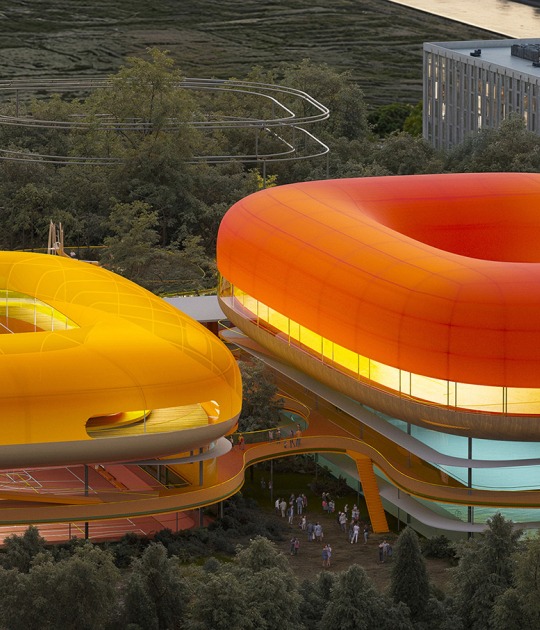Description of project by Canales Lombardero
A new multifunctional building for fairs, conferences and exhibitions is to be proposed adjacent to the future reconstruction of El Salvador Pavilion for Paris Universal Exhibition of 1889 in San Salvador City Centre. The pavilion has very small dimensions (10×10 meters) compared to most important buildings in the existing environment, such as the National Palace and the Metropolitan Cathedral. For this reason, the new building is conceived as an articulator of these two different scales. In order to generate a harmonious transition between the two, the new building most relevant features are inspired by the proportions, decorative system (including abstract Mayan symbology) and colours of the Parisian pavilion. The design is also divided into three different areas, that facilitate the transition from the pavilion and its urban context to the interior of the main multi-functional space.
The first area is the one closest to the pavilion. It is a space conceived for the direct and one to one enjoyment of the re-erected pavilion. This space is designed for people to stay close to it, with water features, stands and shaded areas to domesticate the public space and It is in this very close distance that citizens can fully enjoy the pavilion, its intricate decorative system, its different textures that cannot be appreciated in detail from a certain distance. It is also a space where the citizens represent themselves appropriating a stepped area –an architectural feature so much rooted into the original architecture of this land.
If the first area is the place of representation, the second area is the place of gathering. It’s where people gather to celebrate different events, and the antechamber to the main multifunctional space. This area takes the form of the patio, an architectural typology also well-known in most Latin-American cultures. This area of public congregation is surrounded by a slender portico, under which people can protect themselves from the rain and the sun. The portico is not only a space of circulation, but also a space for conversation and to stay. It is also a space that can be used to organize cultural events such as book fairs, local craft markets and outdoor presentations, etc.
The third area refers to the core multi-functional of exhibition space/conference hall/auditorium. This area is an open and reconfigurable space. The space also has the possibility of receiving natural light through an expressive skylight that crowns the building and makes it visible from the outside.
There are five basic configurations for this space:
– Exhibition room free of partitionss (570 m²).
– Exhibition hall with temporary partitions (570 m²).
– Conference hall for 512 seats classic layout
– Conference hall for 530 seats central arrangement
– Open auditorium to the courtyard for 920 seats
This area of the building is also supported by the different logistics areas, access lobbies, cloakrooms, toilets, storage, staff locker rooms, offices, dressing rooms, etc.
The building moment of maximum splendor is when the auditorium unfolds to the patio, to perform traditional outdoor activities in a space both monumental and informally festive.






























